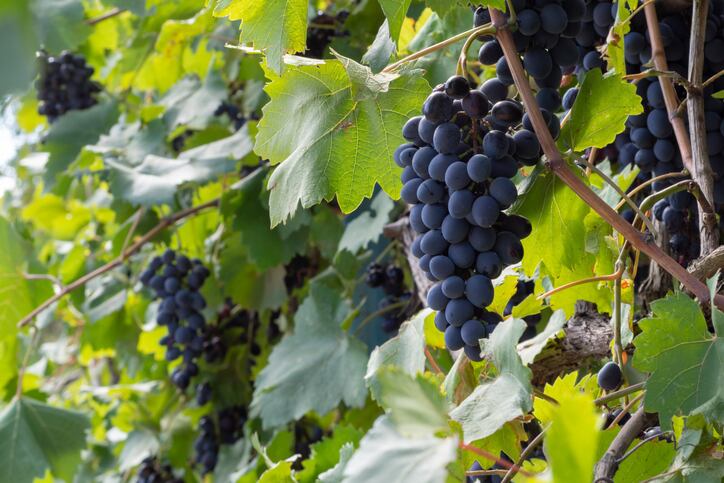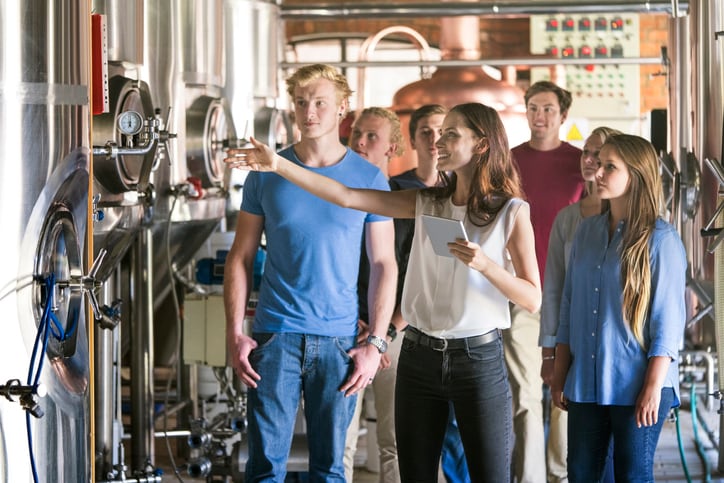World wine production, excluding juices and musts, was estimated at 258 mhl, according to the latest figures from the OIV (International Organization for Vine and Wine). That’s a decrease of nearly 3 mhl (-1%) on 2021.
Northern Hemisphere production
That means worldwide wine production remains largely stable the fourth consecutive year, only slightly below its 20-year average.
In 2022 overall, the dry and hot conditions observed across different regions of the world led to early harvests and average volumes.
In Europe, a series of adverse weather events - spring frost, hail, excess heat, and drought – were observed all along the 2022 growing season. Spring and summer heatwaves across the region resulted in early ripening.
“At the beginning of the season, there was widespread concern that yields were expected to be lower due to extreme heat and lack of rainfall in many areas,” notes the OIV. “However, in the end, the absence of major grape diseases and late summer rains made up for it, resulting in higher yields than initially expected in several regions and countries.”
Wine producing heavyweights Italy (49.8 mhl), France (45.6 mhl), and Spain (35.7 mhl) together accounted for 51% of the world wine production in 2022.
“Among these top three wine producers, Italy is relatively stable in terms of wine production, with -1% compared to 2021 and +2% with respect to its last five-year average,” says the OIV. “France, on the other hand, records an increase in wine production not only compared to the low volume of 2021 (+21%) but also with respect to its last five-year average (+7%).
“Notwithstanding drought and limited access to water in many regions, Spain’s 2022 wine production levels off at +1% compared to 2021, but it is 5% below its last five-year average.”
Among the other major EU countries, Germany is the only country that witnessed a rise in wine production in 2022. A dry and hot growing season was beneficial for vineyards, resulting in a 6% rise in production to a record 8.9 mhl.
Switzerland recorded wine production of 1 mhl, which is not only 63% higher than the extremely low volume of 2021, but also 15% higher than the average observed over the last five years. “The heat waves experienced across Europe were beneficial for Swiss vineyards, which are at relatively high altitudes,” notes the OIV.
In Asia, China’s wine production level in 2022 is estimated to reach a level of 4.2 mhl, marking a reduction of 29% compared to 2021 and adding to declines stretching back over the last decade.
In the US, early frost damages, drought-like conditions in summer and consequent lack of water supply in certain wine regions led to wine production of 22.4 mhl, a level 7% lower than 2021 and 9% lower than its five-year average.
Southern Hemisphere production
The majority of South American wine-producing countries registered a fall in production in 2022 compared to 2021.
Chile was the largest producer in South America in 2022, with wine production peaking at 12.4 mhl. While this is 7% below last year’s exceptionally high production, it remains 7% above its last five-year average.
In 2022, due to extremely variable weather conditions (frost, heavy rainfalls, etc.), Argentina, recorded a decrease in its wine production, reaching 11.5 mhl. This represents a decline of 8% compared to 2021 and 9% in comparison to its last five-year average.
Brazil experienced an increase in its wine production in 2022, with a level of 3.2 mhl (+9% compared to 2021 and +14% against the five‑year average). The ‘exceptionally high volume’ is attributed to La Niña meteorological events.
South Africa’s 2022 wine production came in at 10.2 mhl, a decrease of 6% compared to its 2021 level. The 2022 volume is back to the average production levels recorded before the beginning of the drought that, starting from 2015, heavily impacted the country’s wine production for several years in a row.
Australia in 2022 produced 12.7 mhl (-14% on 2021). After a very low production in 2020 due to dry conditions, fires, and smoke damage in some wine regions, and a rebound in 2021, 2022 is in line with its last five-year average.
New Zealand produced 3.8 mhl in 2022: a 44% increase on 2021’s below-average wine grape harvest. In fact, 2022 represents a record-high wine production for the country: thanks to a mix of excellent climatic conditions and high international demand.




